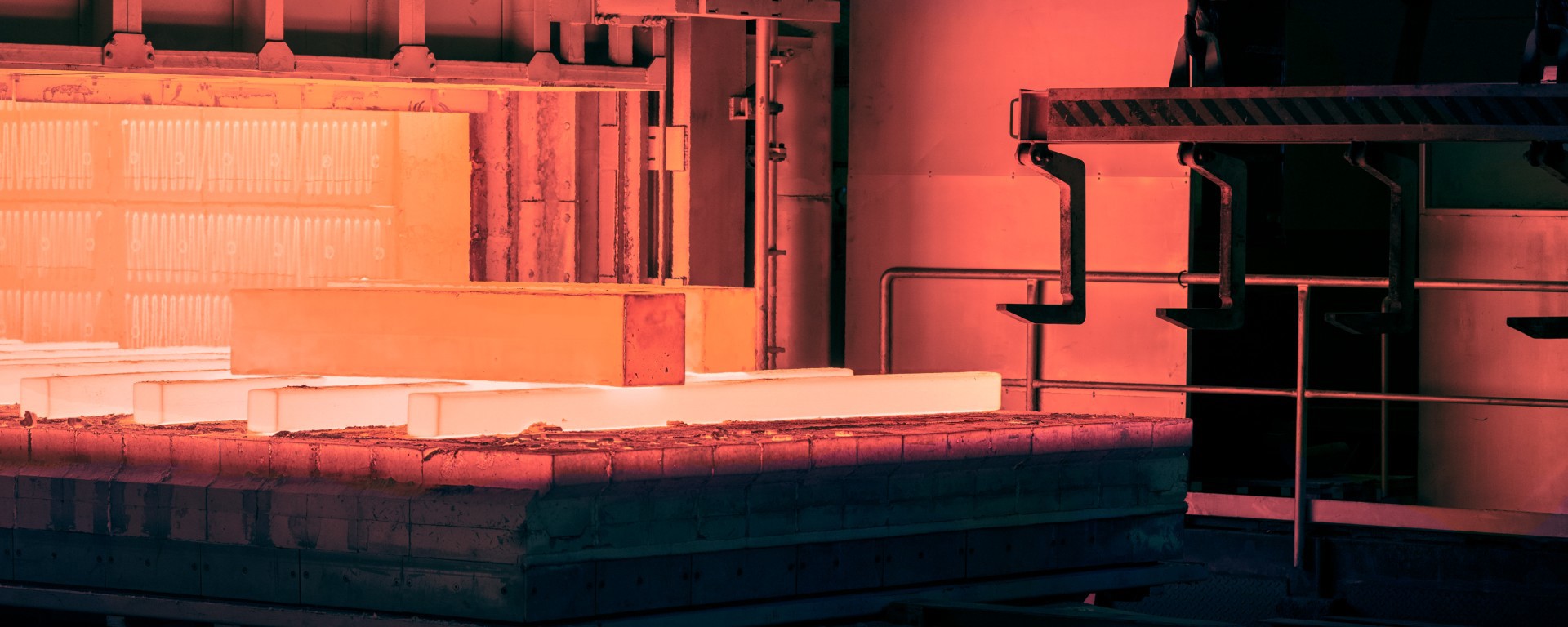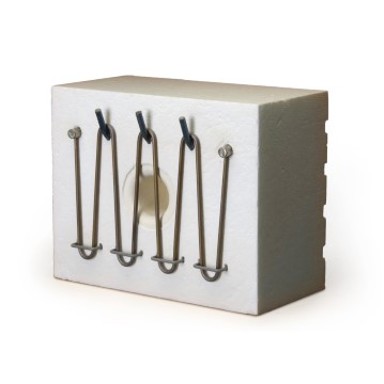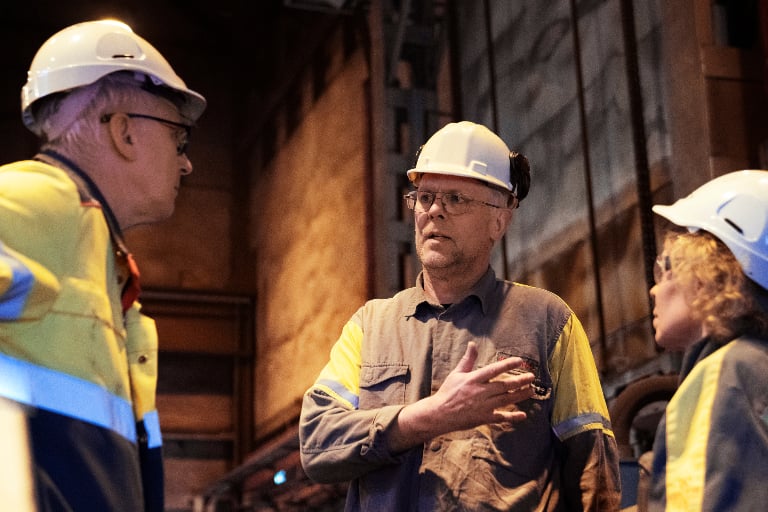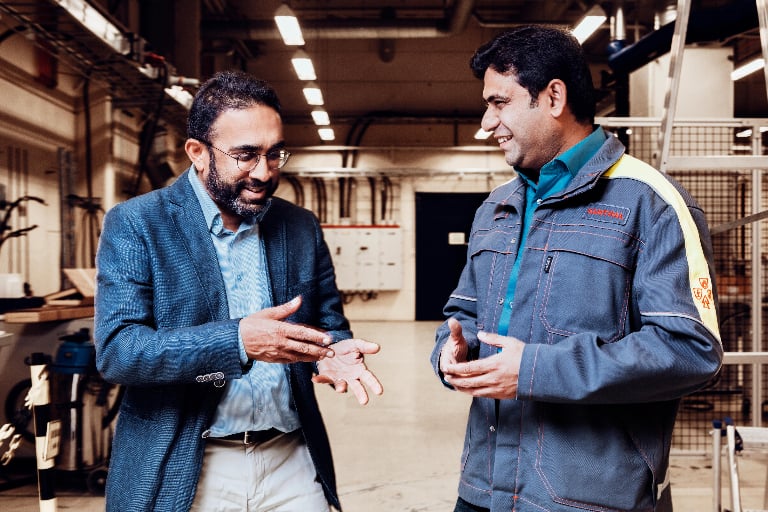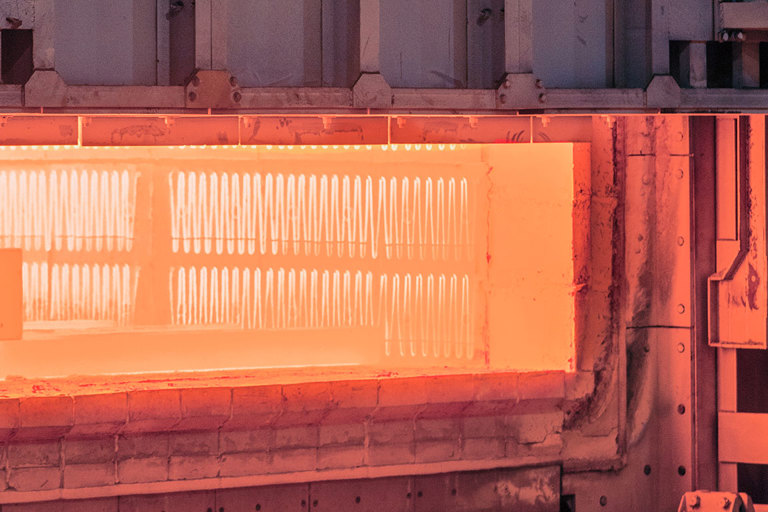The brick-lined, gas-fired car bottom furnaces in the steel industry have long delivered poor thermal efficiency and high thermal mass. Kanthal’s Fibrothal® heating modules by contrast, can provide more efficient and cleaner heating, while its lightweight fiber insulation has far lower thermal mass and is more efficient in applications with temperature fluctuations.
“With open-flame-fired furnaces in particular, the thermal efficiency can be as low as 25 percent,” says Tyke Johnson. “Even with preheating or recuperation, it is still only 50 percent. A lot of heat just goes out the chimney. But with electric heating, the thermal efficiency can be over 90 percent.”
SAVES COSTS AND THE ENVIRONMENT
This not only significantly reduces energy consumption and costs, but also reduces CO2 emissions to virtually zero.
Kanthal’s Fibrothal® combines a metallic heating element embedded in a vacuum-formed ceramic fiber insulation. Compared with refractory bricks, the fiber insulation is far lighter, with low thermal mass and low thermal conductivity.
If you line a car bottom furnace with Fibrothal® panels, the amount of energy absorbed is far less than with bricks due to the low thermal mass.
“If you line a car bottom furnace with Fibrothal® panels, the amount of energy absorbed is far less than with bricks due to the low thermal mass,” Johnson says. “This is really beneficial in furnaces that run intermittently in cycles, since it reduces the time needed to achieve the required heat.”
CONVERTING TO ELECTRICITY IS SIMPLE
Kanthal has converted a number of brick-lined, gas-fired car bottom furnaces to Fibrothal® and has seen kilowatt-hours per ton of steel heated decline by up to two-thirds. And because Fibrothal® is easy to install, converting to electric is relatively straightforward and simple.
“You just pull out the gas burners and insulation and reline it with Fibrothal® and rod overbend heating elements,” Johnson explains. “It can be used for both wall and roof mountings.”
Four major benefits of electrifying your car bottom furnaces for ingot heating
By replacing refractory bricks and gas burners in car bottom furnaces with Kanthal’s Fibrothal® heating modules, steel producers can benefit in the following four ways:
- Zero emissions
By electrifying the heating, all the CO2 emissions generated by gas burners can be eliminated. And if the electricity used is from a renewable source, emissions will be virtually zero. - Better thermal efficiency
The thermal efficiency of gas burners is poor, with most of the heat being released. In contrast, virtually all heat generated electrically remains in the furnace and the heat losses are almost nonexistent. After converting brick-lined, gas-fired car bottom furnaces to Fibrothal®, Kanthal has seen a reduction of up to two-thirds in the kilowatt-hours needed per ton of steel. - Less maintenance
The fiber insulation used in Fibrothal® has a far lower density than brick, enabling it to better withstand temperature fluctuations and extreme heat. It will require far less maintenance and will deliver a longer service life. - Easy to install
Fibrothal® combines a metallic heating element embedded in a fiber insulation panel. These come in different sizes and forms, and they simply need to line the walls and roof of the furnace. Converting an existing brick-lined, gas-fired car bottom furnace is simple and straightforward, and Kanthal has already helped many customers achieve it.
Connected products
Here you can find the Kanthal product offering
Learn from our experts
Our latest articles
